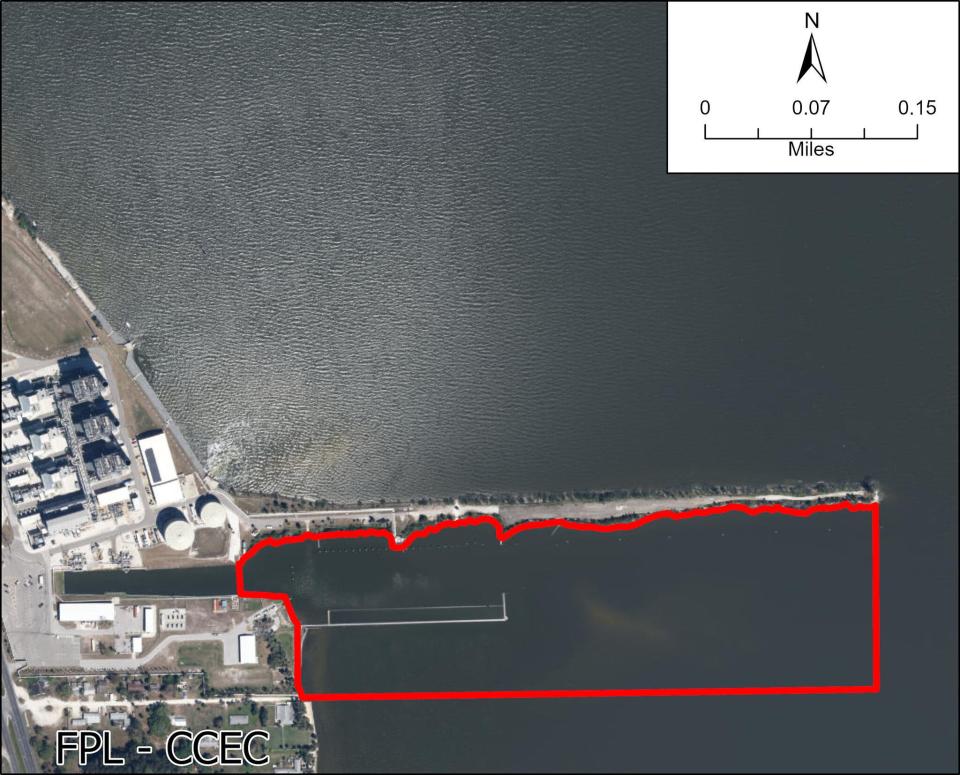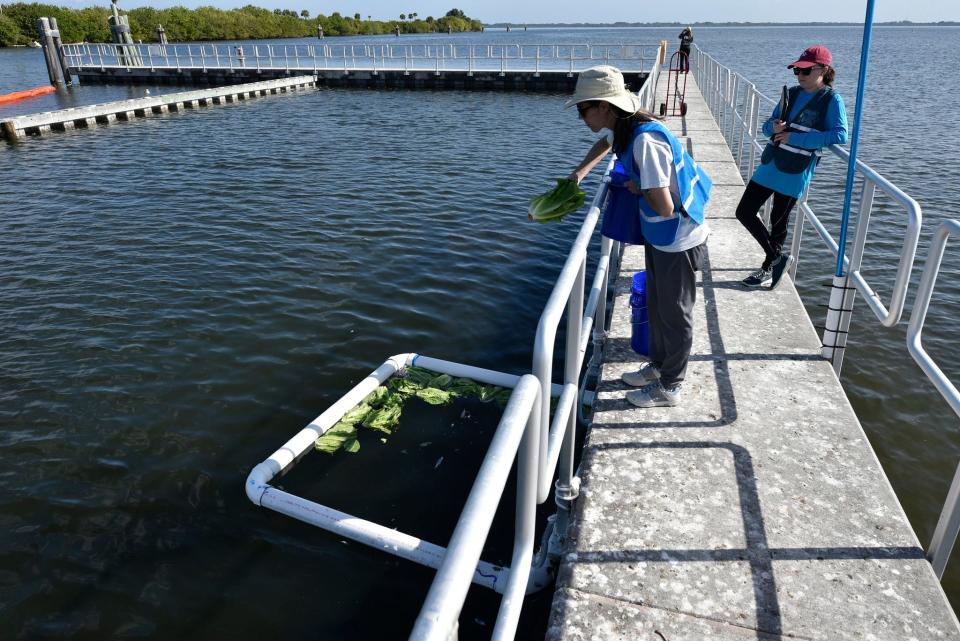Manatee feeding: FWC expands Brevard County site in hopes sea cows eat provided lettuce
It's been six weeks since wildlife officials approved an unprecedented feeding trial for wild manatees, but there's still no evidence sea cows are eating the leafy greens.
Officials are slowly expanding the feeding trial area in the hope that starving manatees will see and eat the romaine lettuce they're providing, Florida Fish and Wildlife Conservation Commission spokesperson Carli Segelson told TCPalm Wednesday.
The experimental feeding site is at the Florida Power & Light Cape Canaveral Clean Energy Center bordering the Indian River Lagoon in Brevard County. It's the epicenter of the ongoing manatee die-off that saw a record 1,101 manatees die last year.
Unprecedented: Officials approve feeding of starving manatees in limited trial
How to help: 2021 was a record year for Florida manatee deaths. Here are 5 ways you can help sea cows

FWC has set up barriers near the plant's intake to cordon the feeding site from the rest of the lagoon. There have been "occasional" passes from sea cows there, but none have been seen eating the provided lettuce, according to Segelson.
To the north, near the plant's warm-water discharge, "manatees are gathering in fluctuating numbers," and FWC is now experimenting with feeding there, Segelson told TCPalm in an email.
Floating squares made of PVC pipe are stuffed with romaine lettuce, much like a livestock hay feeder you'd see on a farm for horses or goats. FWC is now exploring how feeders could be added on the north side, where manatees are gathering.
"Staff did take some lettuce to the discharge side of the canal to see if manatees would eat it," Segelson said. "They are also discussing other feeder designs that might be able to be used at the site."
A new shipment including 600 pounds of romaine lettuce and 720 pounds of butterleaf lettuce were delivered to the site Tuesday, according to FWC. Just over $600 was used from donations to the Fish and Wildlife Foundation of Florida.
Over 2,600 pounds of leafy greens have been purchased so far, according to Segelson.

Manatees gathering with colder weather
More manatees have started gathering as the air and water temperatures in the lagoon began to drop with recent cold fronts. The low forecast was 55 degrees in Cape Canaveral Wednesday.
"With the lower air temperatures, water temperatures have also begun to drop, and manatees are beginning to visit warm-water refuges more frequently," FWC wrote in a weekly update on its website.
One of those refuges is Blue Spring State Park in Volusia County. There, park staff counted a record 664 manatees gathered Wednesday as a brisk 58-degree St. Johns River drove the animals to warmer water, according to Maitland-based nonprofit Save the Manatee Club.
Skipping the salad: Manatees uninterested in romaine lettuce, but that could change as lagoon gets colder
Water below 68 degrees can stress sea cows, and the springs offers a comfortable 72-degree refuge nearly year-round.
The manatees gathering at the spring are largely in good shape, said Pat Rose, and an aquatic biologist and executive director of Save the Manatee Club. That's why state officials have selected the Brevard County power plant for the experimental feeding trial: It's the epicenter of the ongoing die-off.
"The manatees that are utilizing Blue Spring are finding plenty of food," Rose told TCPalm. "But the problem is still very severe in the northern Indian River Lagoon."
A record 1,101 manatees died last year, after decades of seagrass loss in the lagoon — a product of human-caused pollution — left little food to go around.
2021 wasn’t just a record year for manatee deaths: It also brought more manatee rescues than any other year, further stretching response efforts as FWC grappled with an influx of carcass recoveries.
A total 159 manatees were rescued over a 12-month span, and 115 of those were brought to rehabilitation facilities, according to Andy Garrett, FWC’s Marine Mammal Stranding Coordinator.
It appears manatee rescues and releases aren't slowing. In the past week, state wildlife teams released eight manatees after rehabilitation. On Friday, a response team rescued an emaciated female with cold stress in Crescent City and an underweight 9-foot female in a Satellite Beach canal. Both were brought to SeaWorld in Orlando for care.
At least 23 manatees have died this year through Jan. 14, with 13 recorded in Brevard County, three in Indian River County and one in Martin County, FWC data shows.
Max Chesnes is a TCPalm environment reporter focusing on issues facing the Indian River Lagoon, St. Lucie River and Lake Okeechobee. You can keep up with Max on Twitter @MaxChesnes, email him at max.chesnes@tcpalm.com and give him a call at 772-978-2224.
This article originally appeared on Treasure Coast Newspapers: Florida Fish and Wildlife expands manatee feeding near FPL power plant in Brevard

